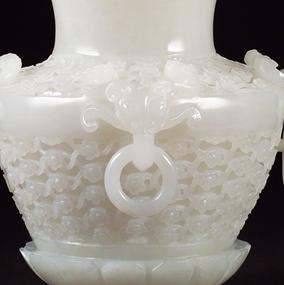According to the report of the US Business Weekly, China, an ancient civilization, has a million-dollar antique every year, including jade, porcelain vases, and celebrity ancient paintings. It is used by speculators to carry out customs at low prices and other means. The value of these treasures has often skyrocketed to twice the original price. Modern Ottoman Knitted Fabric,Ottoman Fabric,Ottoman Knitted Fabric,Plain Dyed Ottoman Fabric SHAOXING XIANCHENG TRADING CO.,LTD , https://www.xcxssfabric.com
According to the survey data of Alice Lovell Rossiter's master's thesis of the Sotheby's Institute of Art, the total price difference between the cultural relics and the cultural relics between 2000 and 2012 is as high as 14 Billion dollars (about 8.73 billion ***). According to Roest's analysis, Chinese laws have strict rules on the declaration of precious cultural relics. The hidden identity of cultural relics is to avoid strict inspections and declarations by Chinese customs.
In addition, when examining the data, Rohit discovered that the evasion strategy for low-cost customs declarations has been in existence for a long time. Beginning in 2011, some exporters have begun to use counterfeit labels and constantly change their product numbers to evade customs inspections.
Driven by the wealthy in China, China has gradually become an international art trading market, and similar conditions have begun to appear in the import of cultural relics. Rossett said that because China has a very high tariff when it imports high-quality art, some art items have been imported into China and they have lied about prices to evade tariffs. Artwork later became a “money laundering toolâ€: Some rich people bought art abroad, then brought it back to China at a low price, and then the art was collected or re-auctioned.
Wu Shu, the author of the book “Who Collects China†in the industry, told reporters that in the past 30 years, about 2.3 million Chinese cultural relics have flowed into the United States, of which more than 200,000 pieces have been collected by museums in the United States. Different from countries such as Britain, France, Japan and Russia, most of the Chinese cultural relics collected by major museums in the United States are illegally obtained through smuggling abroad in the last 20 years or so.
On the other hand, some counterfeit products are packaged as "authentic" and passed out. Guangzhou Customs has inspected a batch of calligraphy and paintings such as Qi Baishi Xiao Pinhua (Shrimp Crab) and Huang Qi Xiao Pin Hua (Donkey) which are marked with the “Textbook of Teaching Materials of the Central Institute of Arts and Crafts†on the outer packaging; the book “The Forbidden City Collection†was printed on the outer packaging. Shen Zhou landscape painting...
This is related to the upsurge of “overseas return†set in the ancient art circle in recent years. Some antique lovers believe that there is no leakage in China and they have turned their sights on overseas markets. It is also the high authenticity rate of “overseas cultural relicsâ€. However, counterfeiters have also begun to use "overseas reflow" to accumulate "good reputation," and instead infiltrated high-imitation products and sought profiteering. Some professional counterfeiters carry out a series of high-fidelity production in China, and send high imitation goods to foreign countries in the form of mail or passengers' shipments, sell them in foreign antique shops, or colluded with foreign cultural relics auction houses, and high-level imitations. Products and some genuine products were mixed and auctioned, and some of the fakes were “washed out†into artifacts.